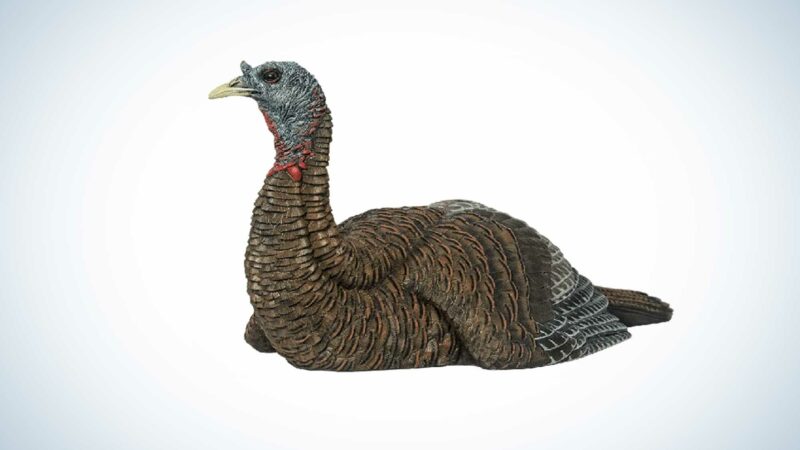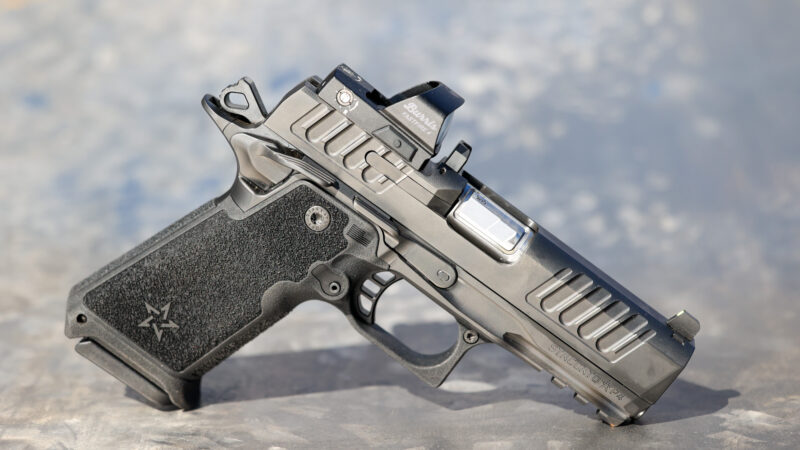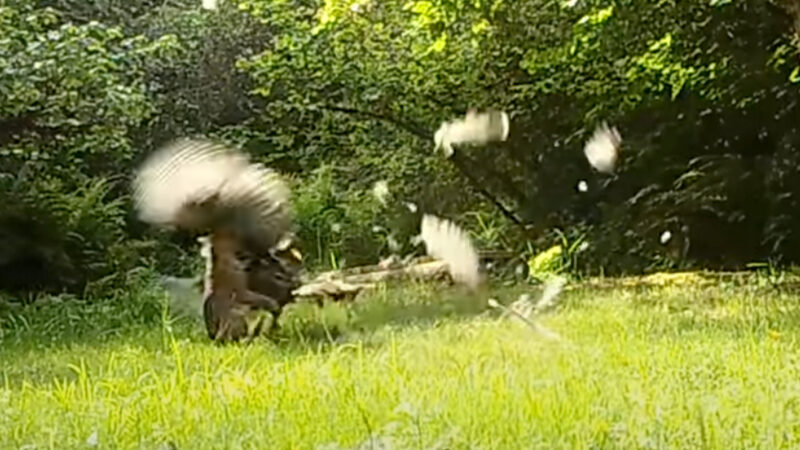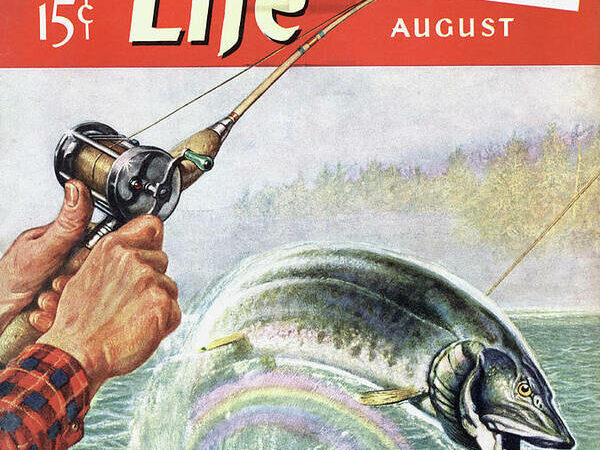Ozonics HR600 Review: Field Testing a High-Tech Scent Eliminator
We may earn revenue from the products available on this page and participate in affiliate programs. Learn More ›
I would never classify myself as a “gadget gal.” I prefer a minimalist approach to hunting and often head into the woods carrying little more than my gun, a pocket knife, and a dragging rope. My idea of scent control involves basic human hygiene (with fragrance-free products) and paying attention to wind direction. So, when I was given the opportunity to test the new Ozonics HR600 in the North Carolina deer woods, I was skeptical. But with both buck tags already notched, I figured I had nothing to lose. Here’s what I discovered.
Ozonics HR600 Specs and Features
- Weight: 1 pound, 10 ounces (with battery)
- Dimensions: 7 x 5.5 x 3 inches
- Battery Life: Up to 13 hours
- Modes: five (standard, boost, hyperboost, DriWash, and locker)
- Bluetooth capability for remote operation
- Replaceable coil
- Additional battery for extended use
- Price: $450
How Ozonics is Supposed to Work
Ozonics pioneered ozone technology to reduce hunters’ scent in 2007. Since then, the company has sold hundreds of thousands of units, according to its president, Buddy Piland. The HR600 is the brand’s newest top-of-the-line model and currently sells for $450 (on sale). That’s a serious investment for the average deer hunter.
Convincing customers of Ozonics’ effectiveness—and proving it’s more than just a gimmick—has been a persistent challenge for the brand. Understanding the science of how Ozonics works is the first obstacle.
Ozone is a molecule made up of three oxygen atoms (O3). The molecule is inherently unstable, always seeking to revert to its diatomic structure (O2). This instability allows ozone to bond with and oxidize bacteria or scent molecules, effectively neutralizing them. While ozone is used across various industries, its key application for deer hunters is simple: ozone generated by an Ozonics unit binds to human scent molecules, helping to mask or eliminate them, preventing detection by deer.
Several hunting-specific ozone-producing devices are available on the market, typically for treating clothing in enclosed bags. However, Ozonics is the only company offering a device designed for in-field use.
In basic terms, an Ozonics unit generates ozone by passing high-voltage electricity through a coil while blowing air over it. Over the years, Ozonics has refined its technology, offering modern units with adjustable ozone levels to suit varying field conditions.
Ozonics president Buddy Piland uses a stream analogy to explain how ozone interacts with human scents. Imagine a stream with rocks and eddies that disrupt the water’s flow. The water flow represents how wind behaves as it moves across a landscape. When we add red dye (representing a hunter’s human scent) to the stream, the dye pools and swirls at different speeds as it drifts through the stream. If we add some purple dye (representing the ozone emitted from an Ozonics unit), the purple will completely cover the red in some areas, eliminating the scent. In others, the two mix, creating a different color, altering but not entirely removing the scent. And in some spots, the dyes never overlap, leaving the scent unaffected.
“Sometimes deer will smell something unusual when ozone is in play,” Piland says. “But instead of panicking and fleeing, they’re more curious, like, ‘What’s that?’”
The effectiveness of ozone in the field depends on wind speed and stability. Faster, more turbulent winds require more ozone to neutralize or obscure the scent. As wind conditions change, hunters need to adjust their Ozonics unit for it to be effective.
HR600 Upgrades
The HR600 is Ozonics’ newest ozone generator. The brand really went back to the drawing board with this new model to address the concerns consumers had addressed about its performance in the field.
One of the biggest complaints hunters had about previous units was the noise, so designers completely revamped the air intake system and the fan, and moved it to the top of the device. The result is a much quieter device. The company claims the new design is 25 percent quieter than previous models.
Other improvements include:
- An upgraded coil to produce 20 percent more ozone.
- Longer battery life. Up to 13 hours of operation in standard mode.
- Integrated, on-board charging means you don’t have to remove the battery to recharge.
- Bluetooth capability so you can operate the unit remotely via your smartphone.
- Red work lights on the bottom of the unit to make it easier to set up and take down in the dark.
My Experience With Ozonics in the Field
I received the new Ozonics HR600 halfway through the North Carolina rifle season. I had already filled my buck tags, but still had several doe tags burning a hole in my pocket. If I messed up a hunt and got busted, it wasn’t like I was ruining my whole season. I still have nightmares about that big twelve-pointer that winded me back in 1991, but I’ve rarely lost sleep over getting busted by a solitary doe or spike.
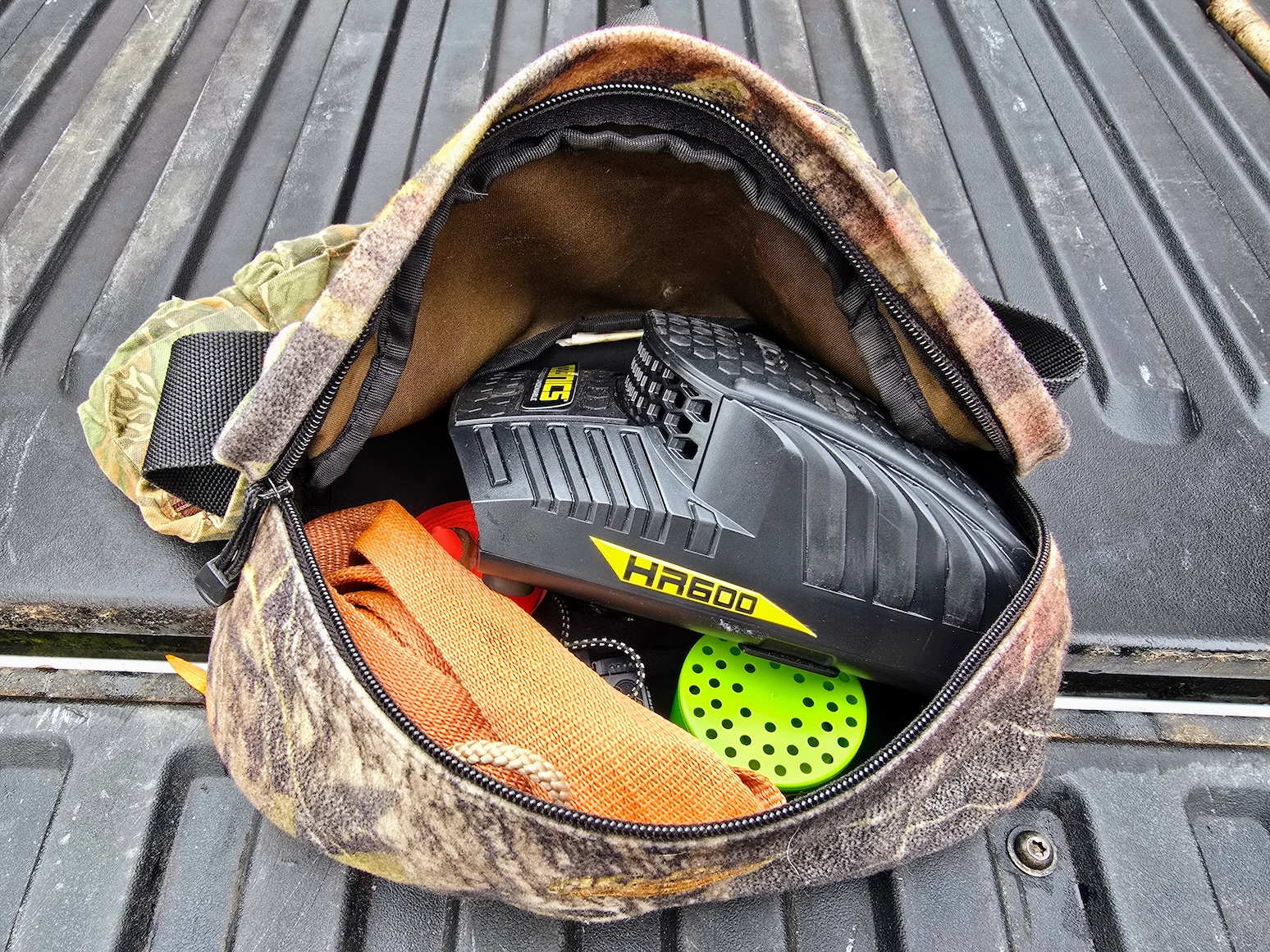
So, I stuffed the unit with a fully-charged battery into my fanny pack and hit the woods. I had to clear out some of the non-essentials like most of my Little Debbie snack cakes and the emergency toilet paper to make room for it. It isn’t exactly super-compact. Weighing in at 1 pound, 10 ounces with the battery according to my kitchen scale, it adds some considerable heft to my pack.
I used the unit over three days while hunting from both a treestand and a ground blind in late November and early December, late in the season when the deer had already been well-educated, associating human scent with danger. Most hunts had me overlooking a corn pile (it is legal to bait whitetails in the Tar Heel state), usually in a less-than-favorable wind.
The unit comes with an arm mounting system that conveniently screws into a tree and allows you to adjust the position and direction of the unit so the ozone blows downwind along with your scent. Once you have the arm in position, it’s still a hassle to attach the unit, particularly if you’re trying to do it in the dark. It also takes some effort to remove after the sun goes down and before you head back to the truck.
However, the HR600 really took some finagling to work from my ground blind (a Game Winner Stealth View HUB Blind). You’re supposed to position the unit above a downwind window. Since the unit did not come with any sort of clip, attaching it to the blind’s frame wasn’t an option. I ended up balancing it on one of the open windows like a sort of hammock. It was pretty precarious and probably not entirely effective. If I were going to use this as a regular accessory for my blind, I would definitely invest in an Ozonics Blind Bracket to make it easier to mount in a stable and favorable position.
I saw zero deer the evening I hunted from the blind, but I did have one lone coyote trot past. When he hit the downwind side, about 50 yards from the blind, he slowed down with his nose pointing straight up in the air. Once he was past, he circled back to get a second whiff, but when he hit the scent stream again, he decided he wasn’t taking any chances. He ran off at a full gallop, giving one yelp when he was a good 100 yards away.
I will note that the HR600 does make some noise. It isn’t super loud — mostly white noise similar to the humming of a camp stove or an amplified Thermacell. Ozonics advertises the HR600 as 25 percent quieter than its other models. Since I don’t have experience with anything other than the HR600, I can’t verify or deny the claim. I will say that the noise is easy to tune out, but there were a couple of times when I would try to hone in on some faint rustling of leaves and had a difficult time telling which direction the sound was coming from due to the humming of the unit.
On the following days, I hunted from my favorite treestand, overlooking a pile of apple-scented corn. I hung the HR600 above me and pointed it downwind. I typically only hunt the spot when the wind is coming out of the southwest, otherwise, the deer have to cross my scent trail on the way to the corn. With the wind coming out of the northwest, I knew I was taking a gamble.
The first morning in the stand, a little spike came out of the woods heading straight for the pile. When he got directly downwind, he went stiff-legged. While he decided he wasn’t up for lingering long enough to grab a snack at the corn pile, he didn’t send out a full-blown alarm. Instead he just went on his merry way, ears his swiveling and tail his twitching.
That evening, I encountered another little buck with four spindly points. He moseyed over to the pile like he didn’t have a care in the world, munched for a few minutes, and then meandered off in the opposite direction.
On the final day, the same four-pointer came wandering back toward the corn pile but was spooked when he got to the trail I came in on, which wasn’t even downwind. That was a good lesson about not getting careless with my regular scent-control protocol just because I’m using Ozonics.
Does Ozonics Work?
It’s impossible to give a definitive answer based solely on my 3-day hunting experience. Getting anything close to scientific would require testing over hundreds of deer encounters. There’s also no way to know how the deer would have reacted if I hadn’t been using the HR600. Sometimes deer just don’t get spooked by scent—most of the time they do.
In 2023, Outdoor Life sent Ozonics units to several die-hard deer hunters, regular-Joe kind of guys without sponsorships, TV shows, or massive social media followings, the type of down-to-earth people who won’t hesitate to call out bullshit gimmicks when they see them.
Altogether, these five hunters had 435 deer encounters while using the Ozonics HR 500, and were only clearly busted 24 times. At the end of the season, they all reported that the Ozonics units they used had a “very noticeable positive impact” or “some noticeable positive impact” on their hunts. All of them said they would continue to use the units for future deer hunting.
The anecdotal evidence of the five everyday hunters and myself is still far from scientific. However, these experiences bring us closer to convincing proof.
Is Ozonics Worth It?
Ozonics seems to work, at least most of the time. Still, the units are not cheap. Are they worth the cold, hard cash and the pack space?
Maybe.
I still think hygiene and playing the wind are the surest paths to success in the whitetail woods. However, sometimes you have to hunt suboptimal wind. In swirling, variable winds, ozone could be the ticket that keeps those pesky old does from busting you before your target buck steps into view, especially if he decides he likes the downwind side of your stand.
Ozonics has worked hard to reduce the noise of their units, which was the biggest previous complaint. However, the HR600 still creates some static-y white noise that can make it difficult to hear an approaching deer. It’s heavy and a hassle to set up and take down hunt after hunt. There are also some health concerns associated with ozone exposure that hunters should review before using an Ozonics unit.
Final Thoughts on Ozonics HR600
As skeptical as I was when I first wedged the HR600 into my fanny pack, I can see myself using it in the future. While it may not be part of my everyday set-up, I would use it on days when the wind shifts mid-hunt. I’ll take that apprehensive, stiff-legged dance of a curious deer over a full-blown whoosh that scares every deer on the property. At least I might get a decent shot while he’s dancing.
The post Ozonics HR600 Review: Field Testing a High-Tech Scent Eliminator appeared first on Outdoor Life.
Source: https://www.outdoorlife.com/gear/ozonics-hr600-review/


